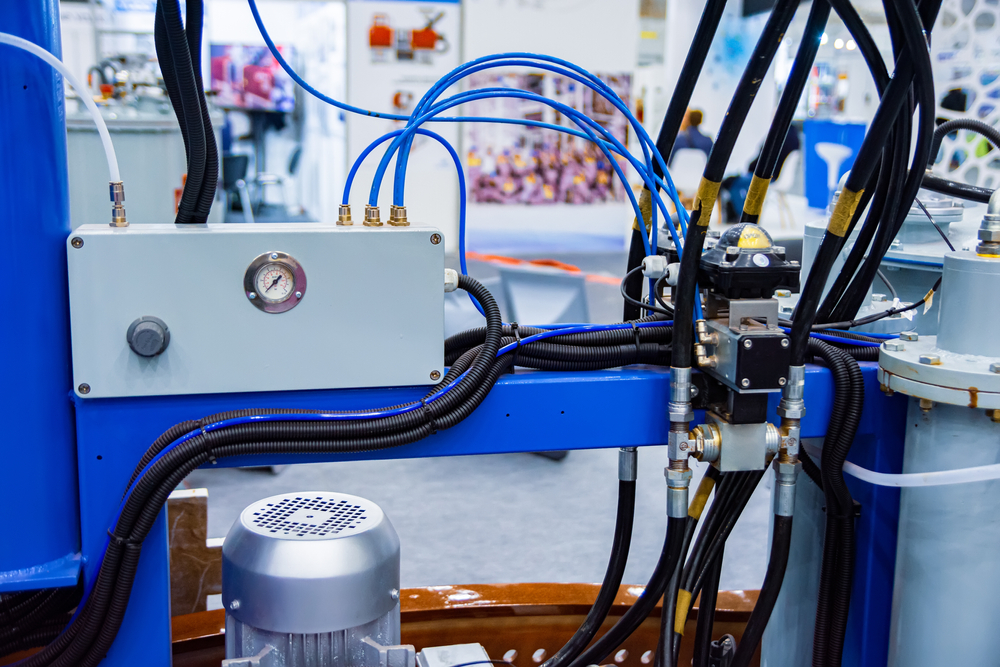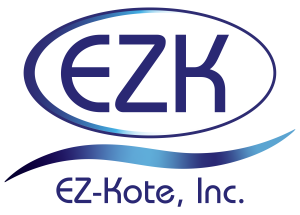
With the variety of materials and manufacturing techniques available today, it’s essential to select a mold release agent that meets your specific needs.
EZ Kote specializes in water-based mold release agents, offering advantages over traditional solvent-based options. We’ll walk through the key factors to consider when selecting the best mold release agent for your application.
Understanding Mold Release Agents
Mold release agents are applied to molds to prevent materials from sticking during the manufacturing process.
Mold release agents ensure that molded parts can be easily removed from the molds, maintaining the integrity and quality of both the parts and the molds themselves. However, there are countless options when choosing a mold release.
Types of Mold Release Agents:
- Water-based mold release agents: These agents use water as a carrier, making them environmentally friendly and safer for workers. They reduce the risk of fire and lower VOC emissions, aligning with stringent environmental regulations.
- Solvent-based mold release agents: These contain solvents as carriers and can provide excellent release properties. However, they are typically more hazardous, with higher toxicity and flammability, and may have greater environmental impacts due to higher VOC emissions.
As EZ-Kote founder and CEO Bill Stephens patented the world’s first water-based mold release technology, we’re versed in the benefits of this formulation. Water-based releases result in lower VOC emissions, reduced environmental impact, non-flammability, lower toxicity, and easier cleaning of molds and products, reducing maintenance time and costs.
Related Post: 5 Reasons Why Water-Based Mold Release Agents Perform Better Than Solvent-Based Types
Factors to Consider When Choosing a Mold Release Agent
Selecting the right mold release agent is key for efficient manufacturing and high-quality results.
Here are vital questions to ask as you consider which mold release to use:
What is the Material of the Molded Part?
Different materials require specific mold release agents to ensure proper performance.
- Plastics: Ensure compatibility with the specific type (e.g., polyethylene, polypropylene).
- Rubber: Needs agents that prevent sticking and ensure a clean release.
- Composites: Must provide excellent separation without affecting the composite structure.
- Metals: Require high-temperature resistant agents that leave no residue.
What is the Manufacturing Process?
Each process comes with its own set of specific and distinct requirements.
- Injection Molding: Requires easy-release agents to maintain quality and reduce cycle times.
- Compression Molding: Needs agents that withstand high pressure and temperature.
- Extrusion: Involves agents that prevent buildup and ensure smooth operation.
- Thermoforming: Requires agents that work effectively with heated sheets.
Related Post: Pros & Cons Of Rotational Molding Vs. Blow Molding
Do you Have Unique Operating Conditions?
Consider the environment in which the release agent will be used, as operating conditions will impact the formula you’ll need.
- Temperature: Choose agents that perform well at the specific operating temperatures.
- Humidity: Select agents designed for high-humidity environments if applicable.
- Chemical Exposure: Ensure resistance to chemicals involved in the process.
Related Post: 5 Factors That Change The Effectiveness Of Mold Release Agents
What are Your Surface Finish Requirements?
Selecting an appropriate release determines the desired finish for your product.
- Smooth finish: Choose agents that leave no residue or blemishes.
- Textured finish: Ensure agents do not interfere with the mold design.
- Matte finish: Select agents that reduce surface sheen for a matte appearance.
Have You Considered the Ease of Application and Removal?
Different removal needs impact the convenience of use.
- Application Methods: Choose agents compatible with your preferred application method (which could be spraying, brushing, or wiping).
- Removal: Water-based agents are typically easier to remove. For plastic products, remove water-based mold release agents with:
- Warm water rinse: Remove bulk residues.
- Mild detergent: Gently scrub with a soft cloth.
- Rinse again: Wash away soap and residues.
- Dry completely: Use a clean towel or air dry.
Related Post: Dos And Don’ts Of Applying Mold Release Agents
Regulatory and Safety Considerations
As you make your choice, ensure compliance with regulations and safety standards.
- Safety: Water-based agents are safer with lower toxicity and reduced fire hazards.
- Environmental Impact: Opt for agents that minimize VOC emissions and comply with environmental regulations.
Steps to Select the Right Mold Release Agent
Selecting the appropriate mold release agent for your specific application is crucial to ensure efficiency, product quality, and cost-effectiveness.
We’ve outlined the steps for making well-informed choices regarding EZ-Kote’s water-based mold release agents.
Step One – Material and Process
Start by clearly identifying the material you are working with and the specific manufacturing process.
- Foam, Silicone, Resin, and Composites: If you are manufacturing parts using these materials, consider EZ-Kote’s M-Series. They are designed to work effectively across a range of these materials, providing excellent release properties and maintaining the integrity of both the mold and the molded part.
- Urethanes: MLEX-2 is ideal for exclusive use with urethanes. This product extends mold life significantly (up to 10 times longer) and is perfect for all thermoset resins.
- Rubber: For rubber molding, R2SZ offers the cleanest molds possible, offering less scrap and more pulls per mold.
Step Two – Environmental Conditions
If your process involves high temperatures, ensure the selected mold release agent can withstand these conditions without degrading.
For example, EZ-Kote’s HMTSZ is designed for rubber industry applications and can handle the high temperatures often involved in rubber molding.
Consider agents like R10SZ, which are formulated to perform well even in varying environmental conditions, ensuring consistent releases regardless of humidity levels.
Step Three – Surface Finish
If you need a high-gloss finish for your molded parts, choose a product like RS3A, which provides an unmatched level of slip and ensures maximum release with a clean mold.
The release agent chosen should not interfere with the final product’s desired texture. Products like the M-Series can help maintain the design of textured molds while still providing effective release properties.
Step Four – Application and Removal Needs
Select a mold release agent that fits your preferred application method and is easy to clean off the final product.
Water-based agents like those from EZ-Kote are typically easier to clean off. Here’s how to remove water-based mold release from plastic products:
- Warm water rinse: Start by rinsing the plastic product with warm water to remove most of the mold release agent.
- Apply mild detergent: Use a mild detergent or soap with a soft cloth or sponge to gently scrub the surface.
- Rinse again: Thoroughly rinse the plastic with warm water to wash away any soap and mold-release residues.
- Dry completely: Dry the plastic product with a clean towel or let it air dry completely before further processing or use.
Related Post: How To Apply A Water-Based Mold Release Agent For Best Results
Step Five – Regulatory Compliance
Ensure the mold release agent meets all relevant industry standards and safety regulations.
As highlighted above, opt for products that minimize VOC emissions, keeping your employees safe. EZ-Kote’s water-based formulations comply with environmental regulations, making them an environmentally friendly choice.
Step Six – Cost and Efficiency
Consider both the initial cost and long-term benefits. For example, MLEX-2 not only extends mold life significantly but also reduces the frequency of mold maintenance, leading to cost savings.
Evaluate how the agent affects cycle times, ease of demolding, and mold cleaning frequency. Efficient agents like R10SZ can enhance productivity and reduce downtime.
EZ-Kote for Water-Based Mold Releases or Custom Formulations
EZ-Kote specializes in providing high-quality water-based mold release agents tailored to meet your specific needs. Whether you have questions about our products or need a custom formulation, contact our team online or call (770) 720-1811.
